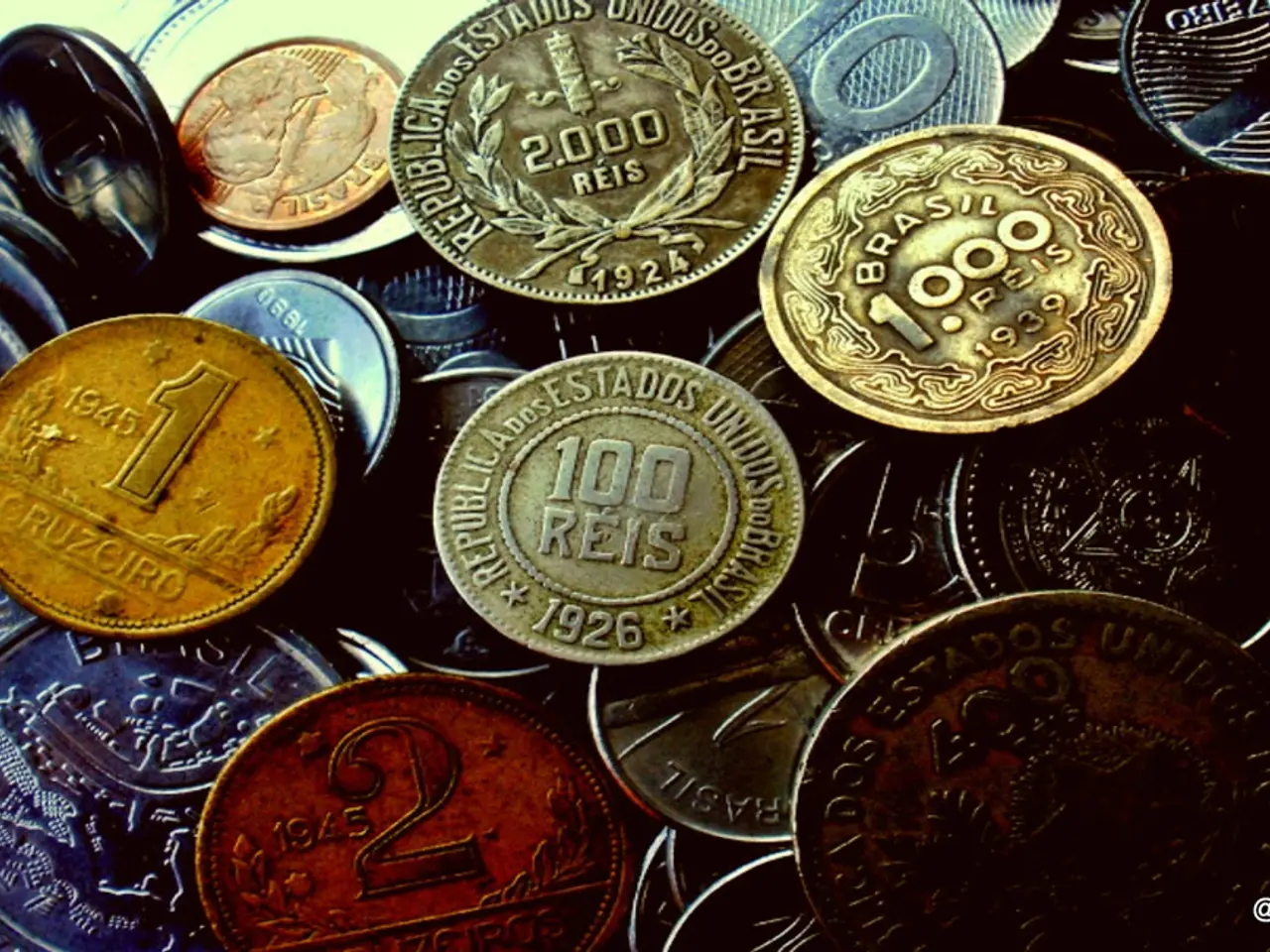Finance in Europe may face relegation to a mere passing point, as the region risks being overshadowed and undervalued in the global financial landscape, with tokenized finance being the primary concern.
In the rapidly evolving world of digital finance, the regulation of stablecoins has become a critical issue for both the United States and Europe.
The US has taken a significant step forward with the passage of the GENIUS Act, a landmark legislation that provides the first federal regulatory framework for payment stablecoins. This comprehensive regime sets clear standards for issuers, supports the US dollar’s global role, and addresses financial and national security risks [1][2][3][4][5].
In contrast, Europe's nascent tokenized finance market is still in its early stages of regulatory development and adoption. The US framework, with its focus on providing legal certainty and encouraging innovation, serves as a point of comparison and potential influence [OMFIF, implied context].
One of the key challenges Europe faces is the supervision of a decentralized network, a task that is also proving taxing for other non-US regulators [1]. The Markets in Crypto-Assets Regulation (MiCAR) drafting process was deemed futile for stablecoins, and efforts to constrain 'asset reference tokens' in MiCAR are inadvertently getting in the way of the ability for tokens to move between public blockchains [1].
Moreover, the reserves of stablecoins, especially those governed under MiCAR, are fully collateralized to ensure holders can be made whole at any time. However, the rules in MiCAR appear structurally contradictory, with localized reserve requirements intended to reduce the risk of stablecoins undermining bank deposits, but in practice, much of the reserve capital for dollar-denominated stablecoins is transferred back to the US [1].
The European Central Bank (ECB) is concerned that multi-issuance will enable non-EU holders to redeem stablecoins via EU entities, potentially draining EU reserve assets and triggering liquidity crises or runs on stablecoins. However, the ECB's fears of large-scale redemption may be irrational in a system where assets are matched 1:1 and highly liquid [1].
There is a debate in Europe over whether to allow 'oligopolistic' dollar-denominated coins from the US to operate in Europe's nascent tokenized finance market. Regulator intervention is unlikely as officials hold the ordoliberal view that it is not their job to force the market [1].
The bigger problem for Europe is that it is, in many ways, an American colony in terms of technology, defence, and to an extent finance, and it will take time and probably American tools to decouple from it in pursuit of strategic autonomy in these areas [1]. The home-grown European alternative for stablecoins is hampered by the fragmented sovereign bond market and long-running inadequacies in attempts to consolidate a single market for banking [1].
National banking champions have yet to combine efforts on tokenization in their own countries, let alone cross-border within Europe. Key European Union member state representatives viewed stablecoins as a passing fad or unnecessary due to central bank digital currency [1].
The uncomfortable semantic concept of 'permissionless' (blockchain) is needlessly distracting policy-makers, according to a key official, who suggests it would be better to focus on regulation of the tokens [1].
John Orchard is Chairman, and Katie-Ann Wilson is Managing Director of the Digital Monetary Institute at OMFIF, an organisation that explores the integration of public blockchain systems into traditional finance [6]. Their work provides valuable insights into the challenges and opportunities presented by the regulation of stablecoins in Europe.
In conclusion, while the US has established a comprehensive federal stablecoin regulatory regime, Europe's tokenized finance sector is still in the process of finding its regulatory footing. The US's approach, with its focus on providing legal certainty and encouraging innovation, offers a potential roadmap for Europe as it navigates these complex issues.
References: [1] OMFIF (2025). Debating the sex of angels: Europe's emerging ecosystem of tokenized assets and stablecoins. OMFIF. [2] Federal Reserve (2025). The regulatory framework for stablecoins: A comparative analysis. Federal Reserve. [3] European Central Bank (2025). Stablecoins: Challenges and opportunities. European Central Bank. [4] Bank for International Settlements (2025). The impact of stablecoins on the global financial system. Bank for International Settlements. [5] Congressional Research Service (2025). The GENIUS Act: An overview and analysis. Congressional Research Service. [6] OMFIF (n.d.). About us. OMFIF.
- The US has passed the GENIUS Act, establishing a federal regulatory framework for payment stablecoins, addressing financial and national security risks, and promoting US dollar's global role.
- In contrast, Europe's tokenized finance market is in its early stages of regulatory development, with challenges like supervising decentralized networks and finding a balance between regulation and innovation.
- The European Central Bank (ECB) expresses concerns about multi-issuance of stablecoins, potential draining of EU reserve assets, and liquidity crises, but the system's liquidity and 1:1 matching may mitigate these fears.
- The EU is debating whether to allow 'oligopolistic' dollar-denominated coins from the US to operate in Europe, with regulators favoring an ordoliberal approach that avoids forcing the market.
- Europe faces the challenge of decoupling from US technology, defence, and finance, as it strives for strategic autonomy in these areas, hampered by the fragmented sovereign bond market and banking issues.
- John Orchard and Katie-Ann Wilson, from the Digital Monetary Institute at OMFIF, offer valuable insights into Europe's stablecoin regulation challenges and opportunities, providing a potential roadmap for navigating these issues.
- The rapid digitalization of finance, including AI and technology, is revolutionizing the finance sector, making policy-making and regulation crucial to ensuring public trust, controlling risks, and harnessing the benefits of emerging technologies in the general-news sphere.



